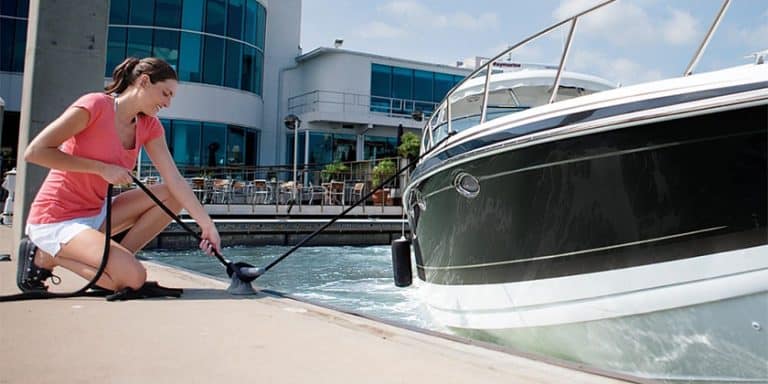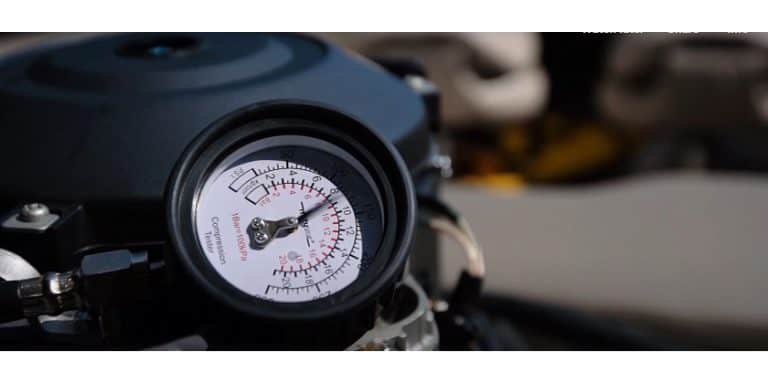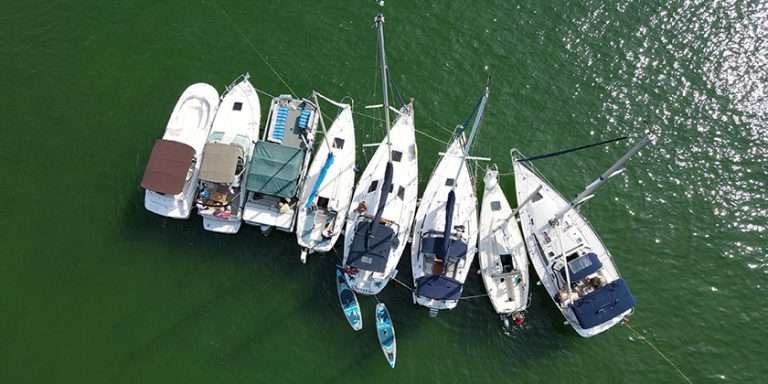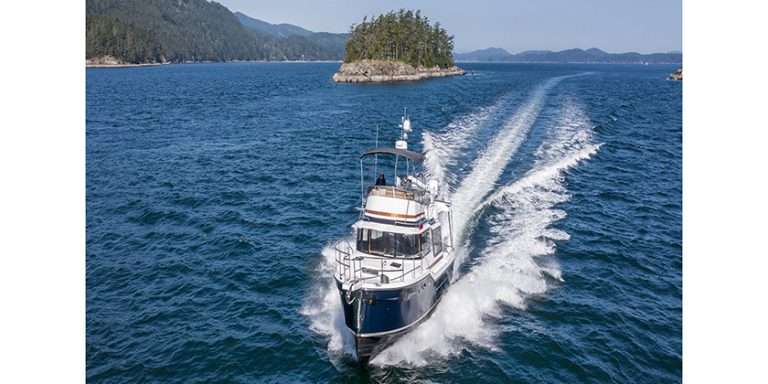Overnight Passage Making
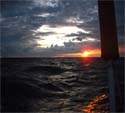
 Every trip, whether it is a day trip, series of day trips, single or multiple overnight trips, will consist of three primary areas of activity: Pre-departure planning, the trip itself and post trip follow up. Let’s start with the planning.
Every trip, whether it is a day trip, series of day trips, single or multiple overnight trips, will consist of three primary areas of activity: Pre-departure planning, the trip itself and post trip follow up. Let’s start with the planning.
Here is a possible basic list of items to check before departure:
- Charts, Notice to Mariners updates and cruising guides
- Navigational equipment
- Communications equipment
- Emergency and safety equipment
- Tools and spare pars
- Food supplies
- Medical and basic first aid supplies
- Personal gear
- Weather information
- Stowage plan and
- Any required personal information
Charts should cover all the areas that you plan to boat in. They should be up to date and contain notes from the latest Notices to Mariners from the Canadian Hydrographic web site: www.chs-shc.gc.ca. Cruising guides can be a great help to identify all kinds of resources and activities available on your proposed route.
Navigation and communications equipment should be in good working order and if you are using hand-held equipment, make sure that the batteries are fresh and that you have enough spares. If you are relying on fixed equipment that only runs on the boat’s auxiliary power then perhaps spare hand-held equipment like GPS and VHF radios should be considered. Note: All VHF radio operators require a Restricted Operator’s Certificate (Maritime) (ROC(M)).
Emergency and safety equipment should be checked to ensure it is all there and in working order. If, at any time, you can be more than one nautical mile from shore, make sure that you have enough flares, they are in good condition, not outdated and stored in a dry accessible location. There should be all the required safety equipment on board to at least meet the minimum regulations. A pre-departure Pleasure Craft Courtesy Check from your local Canadian Power & Sail Squadron or Canadian Coast Guard Auxiliary Unit would be a good idea. They will check over your entire vessel for safety related items. Consider an “overboard pole”
There must be a Personal Flotation Device (PFD) on board for every person. They must be in good shape and the right size to fit everyone. Attach a whistle to each PFD or lifejacket and, for overnight passages, a small waterproof strobe light attached is worth considering.
Make sure you have a tool kit and the spare parts required to effect basic repairs. Most breakdowns are the result of running out of gas so make sure you have enough to meet the 1/3rd rule: 1/3rd to get to your destination, 1/3rd to get back and 1/3rd for emergencies. If you’re sailing, consider how much gas you would need for your auxiliary power should there be no wind.
Carry enough food and water for everyone on board to meet your needs should you not be able to make it to a port as planned. Think about having enough for at least one extra day.
Carry a basic First Aid kit. Check it to make sure that all the items that are usually in it are still there. Extra sun screen is a good idea and if anyone uses personal medications make sure they are carrying a good supply with enough extra for emergencies. Sea sickness can ruin a fun trip for anyone, so also consider a supply of sea sickness medication.
Everyone should have spare clothing, cold weather gear should it become necessary, a hat and sun glasses.
Check local long range marine weather forecasts.
If you are travelling in international waters, including the US, make sure you have all the required travel documents and they are in good order. You will also need a Station License for your VHF radio(s).
It is recommended that you file a Trip Plan before every trip no matter how long or short it is. A Trip Plan, sometimes called a Float Plan or Sail Plan, is a brief description of your trip, the proposed route, destinations and timing. It should include a description of the vessel and identify all the people on board, contact information and the date and time of the expected return. Give a copy of the Trip Plan to a responsible person and instruct them to contact the police and/or your regional Rescue Coordination Centre if you fail to return at the expected time. For contact information, go to the Transport Canada Boating Safety web site www.boating safety.gc.ca or call 1-800-267-6687. If you are going on a longer trip, call in with a daily position report and report any changes to the planned route and timing. To avoid an unnecessary and costly search for you, make sure that you report your return and completion of the trip and “Close” the Trip Plan. Forgetting to do this can result in lost time and valuable resources for Search and Rescue personnel.
Here is a sample plan taken from Transport Canada’s Safe Boating Guide which is available free from many marinas and marine supply stores.
Make sure everyone knows where all the safety, personal gear and food supplies are located.
Safety harnesses should be worn to attach lifelines to railings when moving about at night or in foul weather and it is strongly recommended that PFDs or lifejackets be worn at all times while on deck.
Before going too far, practice the procedure for aiding a person who has fallen overboard so that everyone knows what to do and how to do it.
Maintain a weather report watch on your VHF radio.
Special consideration should be given to children aboard, especially those who might not be familiar with the boating experience. A child who does not enjoy boating or who is prone to sea sickness can make an entire trip miserable for everyone aboard. Children need a place where they can keep their own things, a place they can call their own and where they can go should they get tired, bored, feel ill or need a place to go during rough seas. Carry a supply of toys, games and work books to keep them occupied. When on deck all children should wear their PFD and know what to do and to expect should they fall overboard. Again, remember the lifelines in rough weather. Give children responsibilities and use the trip as a learning experience to improve their boating skills.
Set up a regular schedule for meals, assign duties for meal preparation and clean up. Make sure there is always a supply of fresh water so people don’t get dehydrated. Allow at least 4-6 litres per person and establish a water conservation plan should an emergency arise.
The skipper‘s responsibility includes the safety of all passengers and crew and the safe operation of the vessel. The Skipper should let everyone know what is expected of them, when and why. Everyone should begin to think of themselves as part of a team and that they are also responsible for their shipmate’s safety and welfare. For any lengthy passage, the Skipper should set up a “watch keeping “ schedule so everyone has a turn to maintain a watch and have time to relax, rest or sleep. The Skipper should ensure that they get enough rest to be able to take control should the need arise. A rested crew is a safe crew; they are less likely to make mistakes and errors in judgment.
A watch system will let everyone know when they have time on deck and time below. Without such a system, everyone will tend to be on deck all the time until they run out of steam. A suggestion is to split the crew up into groups of two with one on deck and one below every four hours. This would be effective not just for night passages but during the daytime as well for multi-day passages. With only two people on board usually three hours is enough time at the helm. When single-handing, there should be a fixed time to work and a fixed time to sleep. During sleep, a radar alarm should be set to notify the skipper of the presence of another ship or potential hazard within a designated radius (i.e., 5 kilometers).
During all passages be aware of the needs of others and be courteous. A boat can become very cramped quarters after even a short time. Try and maintain a tidy vessel. Stow loose and unneeded gear so it doesn’t get in the way and become a potential safety hazard.
When you get to port carry out a quick all round clean up, dispose of any garbage in proper garbage and recyclable waste disposal units. Re-fuel, top up fresh water tanks and empty black and grey water tanks at approved pump out facilities. Re-supply as necessary and go over your pre-departure check list one more time.
Repeat this process each time you enter a new port and again at the end of the trip.
The first thing to do is to report to the person who has your Trip Plan and let them know that you have returned and your trip is completed.
This is the third and final activity. As you “circle” the vessel and clean up, note any necessary repairs and replacement that are required and set up a schedule to carry them out so that you are ready for the next trip. Check for any wear and tear, check for leaks, replace or service any safety items that you have used and try to leave the vessel in the same condition it was before you loaded up you personal items and food stores and started out on your trip.


